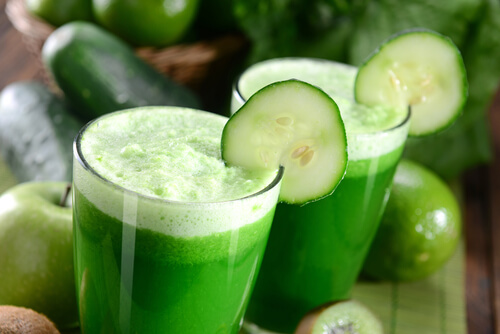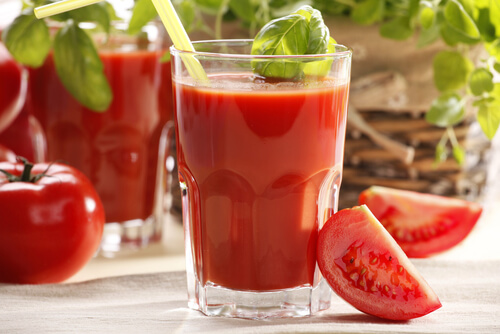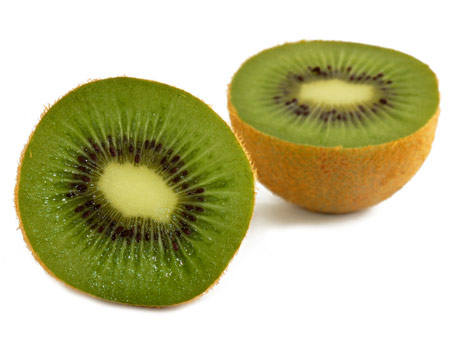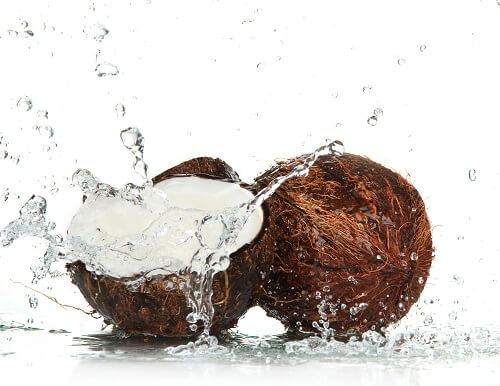10 Foods that Hydrate Your Skin
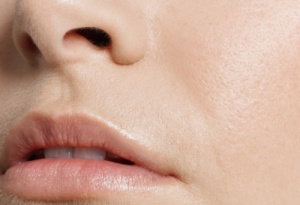
The saying ‘You are what you eat’ isn’t far from the truth. The truth is that diet has a great impact on your overall health, both inside and out. What you eat can either take care of or damage your organs, maintain your body temperature, and affect your digestion positively or negatively. It can also impact your skin, and in this article, we’ll list ten different foods that hydrate your skin.
Drinking enough water and staying hydrated is essential for our body, especially when it comes to reducing the risk of diseases, giving us energy, and burning fat quickly. It is also essential that you limit your salt intake because sodium makes you retain fluids, which complicates toxin disposal.
When speaking about hydration, we aren’t only referring to foods in liquid form. It doesn’t matter if you eat liquids or solids. We are talking about any food that has been cooked in water, for example juices, teas, broths, soups, etc.
Some foods are made up of almost 100% water. Find out about some of them so that you can perfectly hydrate your skin.
Foods that hydrate your skin
Cucumber
The first of our foods that hydrate your skin are cucumbers. They are made up of 65% water, have only 17 calories, and contain nutrients like potassium, vitamin C, and fiber. Consequently, they are great for digestion, and we recommend that you consume them raw in order to take advantage of their benefits.
Papaya
Papaya helps digestion, gives more energy to your body to repair your skin which, in turn, helps it to glow. Also, because it contains vitamin A, it helps in the proper functioning of your organs.
Watermelon
Watermelon is rich in vitamin C, which is great for having hydrated skin and good bodily defenses. It’s made up of 92% water, and it can also help to reduce the risk of cardiac diseases. Additionally it can help to prevent different kinds of cancer like prostate, ovarian, cervical, oral, pharynx, esophagus, lungs, and pancreas.
You can eat it on an empty stomach to improve digestion, or, alternatively, eat it on its own, so that you don’t miss out on any of its benefits.
Tomatoes
Since tomatoes are composed of lycopene (a powerful antioxidant), they are an important skin protector and help to fight aging and acne. They are made of 94% water and contain an average of 20 calories. In addition to that, they are a source of potassium, phosphorus, and vitamin A and C.
Apples
Apples contain 86% water. Eating an apple a day will also give your body the fiber it needs. It is one of the fruits with the highest amount of antioxidants. Because of this, it can help to reduce the growth of cancerous cells, the risk of having Alzheimer’s, and heart diseases.
Leafy greens
Spinach and lettuce have 95% water, are rich in vitamins A and C, which, as we have already mentioned, are special in caring for your skin. They have minerals, antioxidants, and nutrients that help detoxification by helping eliminate toxins and impurities from the skin. They can also help to prevent cancer, preserve memory, and keep your vision healthy.
Kiwi
This fruit has 83% water. Eating a kiwi gives you over double the daily requirement of vitamin C. Because it contains fiber, it’s great for regulating cholesterol and blood pressure. As a result, it can reduce the risk of clots and lower the levels of blood lipids.
Grapefruit
Grapefruit has the same qualities as tomatoes because it contains lycopene and high levels of antioxidants, which, as a result, keep your skin clear and acne free.
Coconut water
Coconut water, as well as being extremely hydrating, is good for digestion and your skin because it builds skin membranes. This will leave it smooth and shining.
Orange juice
The last, but not least, of foods that hydrate your skin are oranges have 88% water, are rich in potassium, vitamin C, calcium, folic acid, and have the necessary nutrients for skin repair.
Remember that it is essential that you eat well in order to stay healthy inside and out. You don’t have to make any sacrifices, they are delicious foods that you can easily include in your dietary habits and meals, or to relieve sudden cravings for sweet foods.
All cited sources were thoroughly reviewed by our team to ensure their quality, reliability, currency, and validity. The bibliography of this article was considered reliable and of academic or scientific accuracy.
- Mendez-Cabeza Velazquez, J., Alache Zúñiga, H., & Cerrada Cerrada, E. (2003). Management of atopic dermatitis in Primary Health Care. MEDIFAM – Revista de Medicina Familiar y Comunitaria.
- Scientific Advisory Committee on Nutrition. (2016). Vitamin D and Health 2016. Scientific Advisory Committee on Nutrition (SACN). https://doi.org/10.1007/s00198-015-3440-3
- Sundram, K., Sambanthamurthi, R., & Tan, Y. A. (2003). Palm fruit chemistry and nutrition. In Asia Pacific Journal of Clinical Nutrition.
- Draelos, Z. D. (2010). Nutrition and enhancing youthful-appearing skin. Clinics in Dermatology. https://doi.org/10.1016/j.clindermatol.2010.03.019
This text is provided for informational purposes only and does not replace consultation with a professional. If in doubt, consult your specialist.

